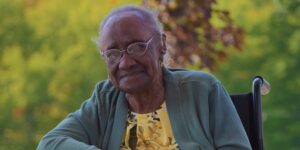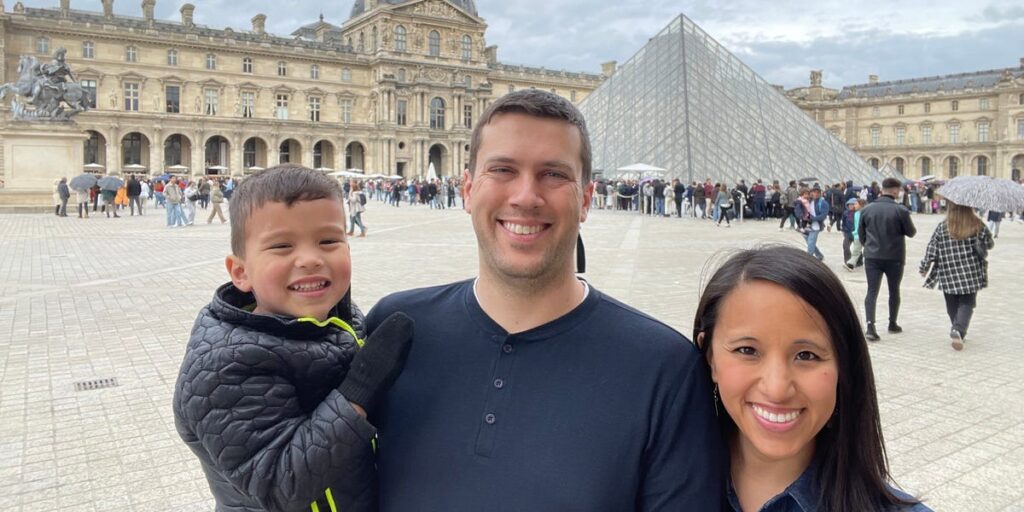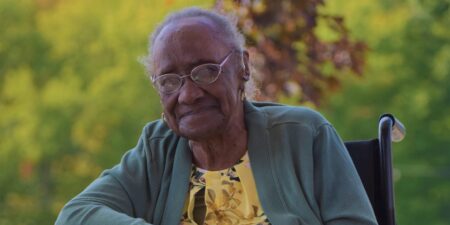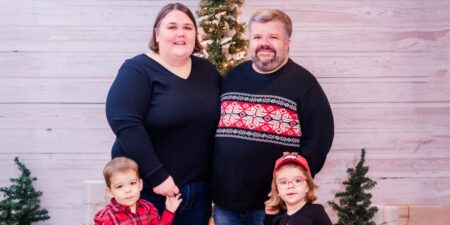They reached a total net worth of $4.1 million, including their two homes, from working high-paying jobs, cutting back on spending for most expenses, and avoiding lifestyle creep. Phan left dentistry full-time after experiencing nerve pain and having her son, working part-time while Wagoner works full-time. They live modestly and save for their family’s future, though they still go on vacations and to Seahawks games.
“Financial independence is not having to work full-time and the freedom to be able to send my child to full-time preschool, 40 hours a week, and come home and be able to do the things that I want to do,” Phan said.
Many Americans are working to achieve financial independence — or having enough savings or income to live comfortably for life. Some are hoping that will allow them to retire early, thus making them part of the FIRE movement, though some like Phan and Wagoner continue working for extra financial security and personal satisfaction.
“I want to be able to walk away from any job if it’s not working,” Wagoner said. “What I really care about is the financially independent part, so if I wanted to take a year off and go travel, or if I wanted to get out of a job that is really stressing me out and causing me mental difficulties.”
Working toward financial independence
Phan was born an hour south of Seattle to parents who “weren’t wealthy by any means,” though they took her on vacations and allowed her to participate in various extracurricular activities. Her parents taught her to live frugally and only spend on what’s important.
She worked at Subway, drove a used car, and got a phone as a senior in high school after most people in her grade. She got financial aid for her bachelor’s degree and then enrolled in dental school. She rejected half the student loan package offered because she didn’t need it and wanted to live debt-free as soon as possible after graduation.
Across eight years of school, she borrowed $140,000 — $80,000 was from the government, which she paid off two years after graduating, and $60,000 was from her parents, whom she paid back a year after graduation.
Wagoner grew up in a small Michigan town and worked at his father’s grocery store starting at 14, allowing him to buy a car before his 16th birthday. His accountant mom taught him how to set up a bank account and spend frugally — though he admits there weren’t many places in his town to do so.
He was the first in his family to attend college, and he chose Michigan State University with various scholarships paying for half his tuition. He paid for his living expenses through internships at Microsoft and drove his car until it stopped working. He read financial independence books emphasizing spending on important things and cutting back on unimportant ones.
He saved up enough to buy a condo, knowing his income was stable and growing, which he and Phan later paid off and rented to tenants.
Phan and Wagoner met in 2015 while he was still at Microsoft — he had four more years of income, 401(k) matching, and no student debt. While dating, he told her he wanted to retire by 40. Phan was less convinced — she wanted to start a dental practice and knew it would take years to get it off the ground.
“I thought he was crazy, and I said, I’m not going to eat rice and beans the rest of my life,” Phan said.
They decided to map out their family expenses and used Wealthfront, an automated investment service, which helped them build wealth through investments and high-yield savings. They both have kept their finances separate but share their numbers openly.
Starting to strategize
They didn’t strategize much in their first few years of dating, instead just living below their means without sacrificing their quality of life.
They paid for their wedding themselves in 2019 and then planned and paid for their honeymoon right before the pandemic. They also put 25% down on a home with an interest rate of 2.75%, which they chose not to pay off because of the low interest rate.
“We got approved for a $1.5 million house, and I told my realtor, don’t waste your breath showing us these houses; we’re not going to spend it,” Phan said. “We’re choosing not to have a very large mortgage payment, so that positive cash flow has really propelled us above our colleagues.”
Over the last few years, they’ve kept expenses down by driving a used car, investing in an e-bike instead of a second vehicle, and being intentional about food purchases. They’ve both maxed out their 401(k)s and IRAs and do everything they can to strategize their tax advantages. They also automated their savings and investments, which helped them keep expenses down and stay more organized.
They had a son in 2020, and Phan transitioned from a full-time dentist to a stay-at-home mom doing part-time dental work. Nerve damage in her right hand prevented her from returning to work full-time. She said their finances were solid enough from not “keeping up with the Joneses” that she could work less while her husband continued to work full-time. Two years ago, Wagoner switched to a job paying two-thirds less than his Microsoft job, though it’s in the video game space, which he enjoys more.
Phan made a spreadsheet to track her net worth, and she was surprised at the number: over $4 million in total assets, about two-thirds of which are liquid. It was enough for both to fully retire, though they chose not to so they could send their kids to college without worrying about the financial burden.
Planning for the future
They put almost $100,000 in their son’s college fund, which they will continue to contribute to, though when he turns 16, they will encourage him to find work. They plan to enroll him in public school but are considering some private options. Phan said she’s already toying with starting his financial education young by giving him a toy allowance.
“I want him to understand the value of money, that he can’t just get whatever he wants, but if he works hard and saves up, he can have his guilt-free spending,” Phan said. “I just don’t want him to have the pressure of paying for school like I did.”
They’ve discovered ways to parent without breaking the bank, such as using public resources like parks and getting cheap museum passes.
Still, they prioritize spending on what they love, such as recent vacations to Mexico and Paris and season tickets to the Seahawks. They find cheap flights, such as $500 round-trip flights to Thailand, and other ways to reduce travel costs without sacrificing quality. They hope to take their son on a months-long trip to Europe or Asia to immerse him in different cultures.
Phan recently hired an interior designer to redo the furniture in their primary home. Wagoner recently spent money on a new office setup, a gym membership, and eye surgery.
Sometimes, it’s hard for her to spend, as she has little desire for anything luxurious, though she said she’s trying to feel less guilty about some higher-cost purchases. They have also loaned over $400,000 to friends as business loans.
Recently, they’ve talked about combining their money and being more open about their finances, allowing them to make better plans for the future.
“We are being more transparent and looking at all of the numbers and being able to talk about these things and say, looking at this account that will keep growing, I think we can do this,” Wagoner said.
They’ve considered what they would pivot to after full retirement — Phan would become a wedding planner, while her husband would consider being a football coach.
“We’ve lived a very humble life and flown under the radar, which is how I think we’ve been able to all of a sudden catapult into this wealth just on hard work,” Phan said.
Are you part of the FIRE movement or living by some of its principles? Reach out to this reporter at nsheidlower@businessinsider.com.
Read the full article here
















